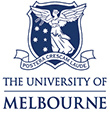Complete inactivation of orthoflavi- and alphaviruses by acetone for safe titering by ELISA
Authors:
- Loterio, Robson K.
- Rosevear, Katherine
- Edenborough, Kathryn
- Fraser, Johanna E.
Details:
Journal of Virological Methods, Volume 335, 2025-06-30
Article Link: Click here
The tissue culture infectious dose 50 (TCID50) end-point dilution assay is the gold-standard assay to titer viruses with negligible or ambiguous cytopathic effects. The assay’s specificity is improved when followed by an Enzyme-Linked Immunosorbent Assay (ELISA) to detect viral antigens. Cells infected with mosquito-borne orthoflavi- and alphaviruses are fixed after TCID50, prior to ELISA, using paraformaldehyde (PFA) or acetone. While 4 % PFA has been shown to effectively inactivate these viruses for safe handling in low biocontainment conditions, equivalent studies have not been reported for standard acetone fixation methods (20 % acetone for 24 hours at 4°C). This study evaluated the inactivation efficacy of acetone on orthoflavi- and alphaviruses using dengue virus (DENV) and Ross River virus (RRV), as exemplar viruses from each genus, respectively. We show that 50 % acetone and 4 % PFA fully inactivate DENV and RRV, but 20 % acetone does not reduce the infectivity of these viruses. Importantly, ELISA-based detection of DENV- and RRV-infected cells fixed with 50 % acetone was effective, with calculated titres comparable to cells treated with 20 % acetone. Together, our results inform a fixation method for titrating orthoflavi- and alphavirus samples by TCID50/ELISA, ensuring the safe handling and processing of these viruses under low biocontainment conditions.


